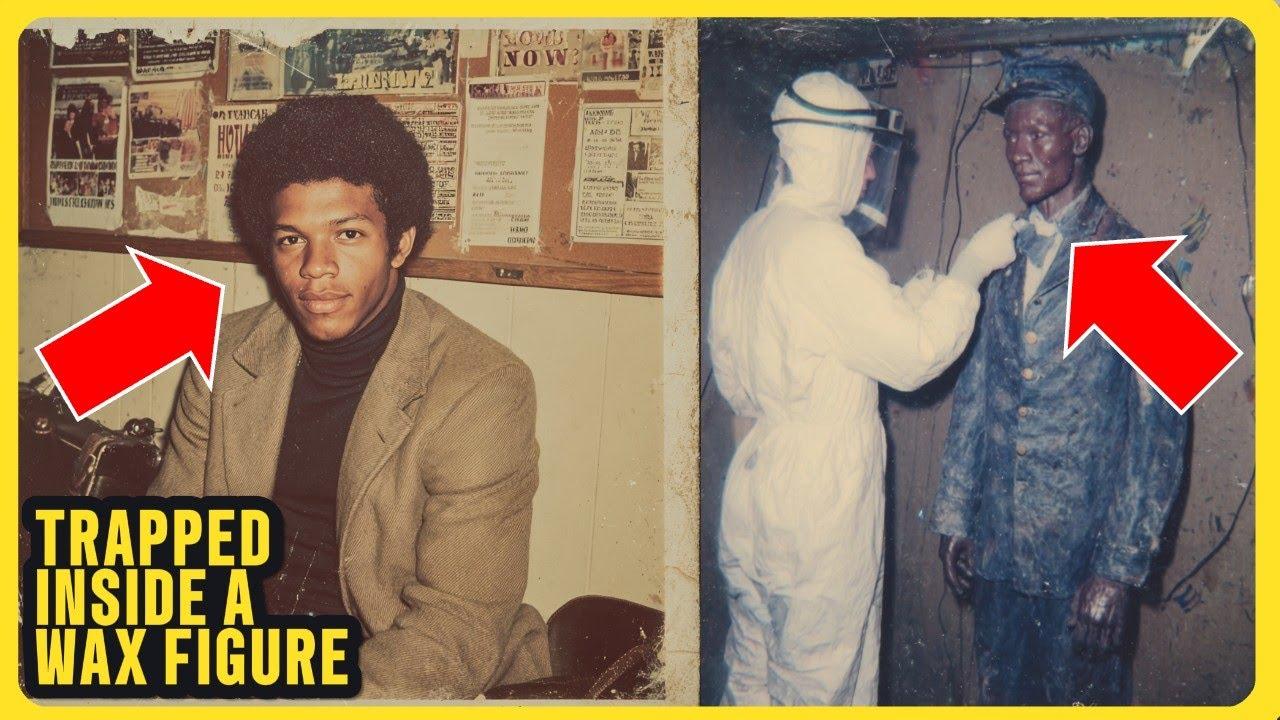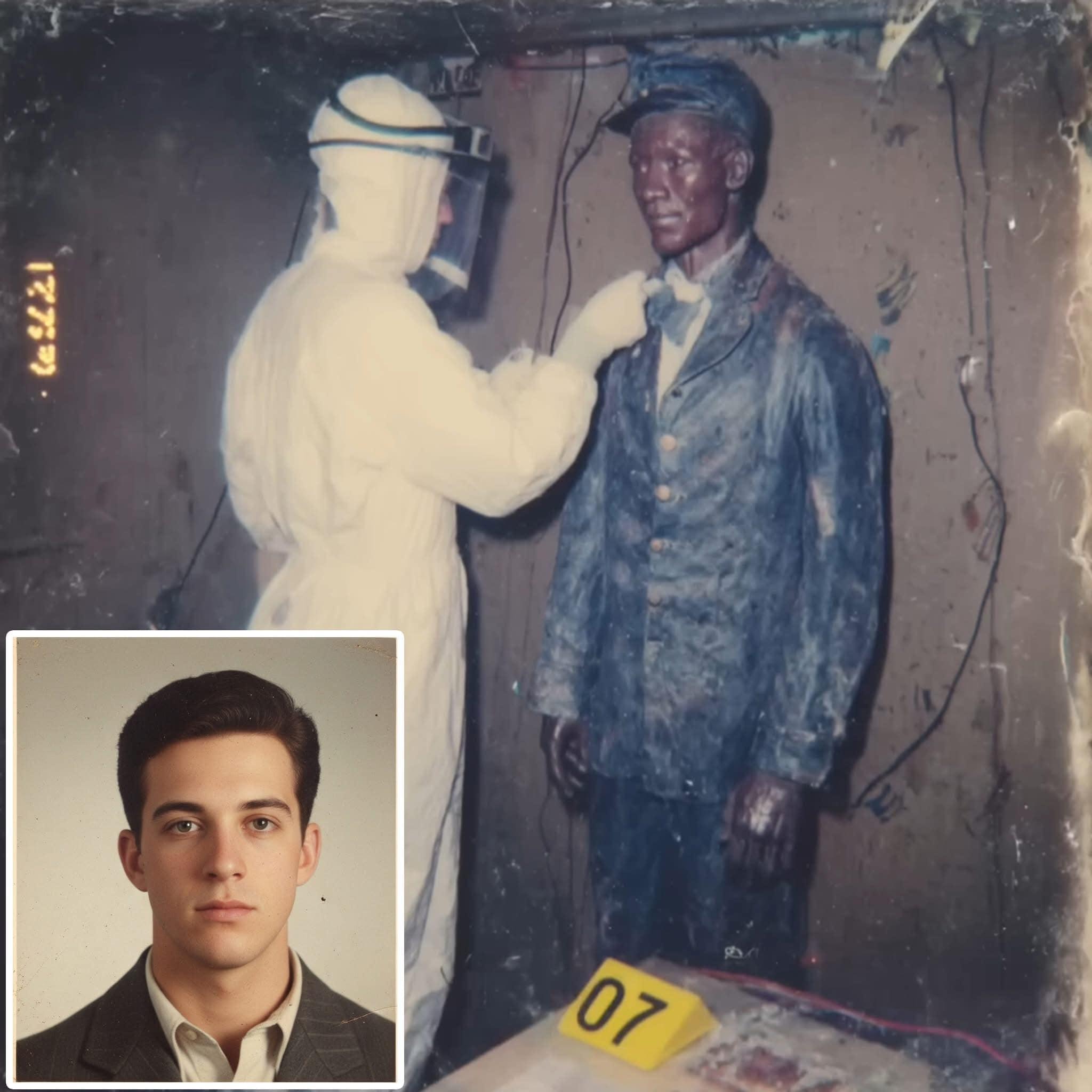
Did a wax figure at the "Pine Bluff Historical Museum" turn out to be a mummified real man who had been missing for years as a viral story claimed? No, that's not true: The story was written by "Muhammad Haseeb Ahmer" who first said it happened in Missouri while including key details like towns and institutions that don't exist. A few days later a different site listing the same author moved the events to "a small town in Europe" and changed several key details like names and races.
The second version of the story appeared as an article (archived here) published on November 7, 2025 by a "Muhammad Haseeb Ahmer", titled:
A Museum Kept a "Wax Figure" for 50 Years --A New Curator Realized It Was the Body of a "Missing" Man
It opened:
In the quiet halls of an unassuming museum nestled on the outskirts of a small European town, a shocking secret had been preserved for over fifty years.
What staff and visitors alike had believed to be a simple wax figure, a part of the museum's display of historical relics, turned out to be something far more sinister.
When a new curator took over the museum in the late summer of 2025, she uncovered a chilling mystery that had eluded generations before her.
The wax figure, on display in a dimly lit room for decades, was lifelike--eerily so. With carefully sculpted features and finely crafted clothing, it was placed alongside various other exhibits, often mistaken for a part of the collection's larger collection of life-sized mannequins.
However, it wasn't until the new curator, Dr. Anne Sinclair, began her meticulous work cataloging the museum's collection that something didn't quite add up.
"I've seen a lot of wax figures in my time," Dr. Sinclair admitted during an interview shortly after the discovery. "But there was something about this one--its realism was unsettling.
The story was illustrated with this image:

(Image source: technomic247.com)
However on November 3, 2025 a different website published a story (archived here) titled "A museum kept a "wax figure" for 50 years -- until in 2025, a new curator discovered it was actually a missing man." That story opened:
"They believed him to be a wax figure for fifty years until a new curator found the truth that rocked a town."
The first thing that caught Clara Whitman's attention was the fragrance, which was subtle but off, like old varnish combined with an unidentified substance.
Clara had just been appointed curator of the Pine Bluff Historical Museum, a small-town institution in rural Missouri, when it came from the back room.
There was a sense of slowness throughout the museum, where each exhibit bore a ghost of the past, the floors moaned with untold stories.
With a clipboard in hand, she perused the exhibits on that June morning in 2025 as sunlight seeped through dusty windows.
She was getting ready for a makeover, which would include new labeling, lighting, and possibly even an electronic guide.
She was hired by the board because she was passionate about bringing forgotten history to life.
However, she could not have been prepared for what she was about to discover.
The Quiet Individual in the Corner
The museum's beloved "wax figure," a man sitting with a newspaper in his lap while wearing a brown suit and bowler hat, has been the focal point of the "Everyday Life in 1920" display for fifty years.
On field trips, kids posed next to him. Visitors made jokes about how "real" he appeared. He was lovingly referred to by the staff as Sam the Silent Man.
He had sat there longer than the majority of the employees had existed.
However, that odd odor drew Clara back as she moved around the room, clipboard pressed to her chest.
She knelt down to the figure and examined his hands, his shoes, and the way the light fell on his cheek. There was a problem. The skin had a leathery texture rather than a waxy one.
Over his hand, her fingers lingered. The half-moon ridges on the fingernails were too real. A shiver went through her arms.
The timing has changed from the "late summer of 2025" to a "June morning in 2025", "Anne Sinclair" is now "Clara Whitman" and the museum "on the outskirts of a small European town" suddenly moved to "Pine Bluff, Missouri" (which appears to be a wooded cliffside, not an actual town).
The website that published the original story listed the author as "James William" but a look at the url of the user profile page of that writer (archived here) reveals his username is "mhaseebahmer12101", quite similar to the "Muhammad Haseeb Ahmer" who wrote the other story.
Since then the story has gone viral on Facebook as well, for example in this post (archived here) which read:
A museum displayed what it thought was a wax figure for 50 years -- until a new curator in 2025 discovered it was actually a missing man...The smell was the first thing that struck Clara Whitman. Faint but wrong -- like old varnish mixed with something she couldn't name. It came from the back room of the Pine Bluff Historical Museum, a small-town institution in rural Missouri where she'd recently been hired as curator.
For fifty years, the museum's prized "wax figure" -- a man in a brown suit and bowler hat, seated with a newspaper in his lap -- had been the centerpiece of the "Everyday Life in 1920" exhibit. Children posed beside him. Tourists joked about how lifelike he looked. The staff affectionately called him Sam the Silent Man.
But on that humid morning in June 2025, as Clara prepared the exhibit for renovation, she noticed something strange: the figure's hands weren't waxy -- they were leathery. The fingernails had half-moon ridges. And beneath a small tear at the collar, she saw something that made her stomach twist -- the faint pattern of human skin.
She called maintenance to move the mannequin, pretending calm. When they lifted it, a brittle sound cracked through the air -- bone.
Within hours, the museum was sealed off with yellow tape. Police swarmed the scene, their radios buzzing. The "wax figure," it turned out, wasn't wax at all. It was a mummified man, preserved by decades of dry air and layers of shellac applied by well-meaning curators.
Detective Ryan Mercer from the Pine Bluff Police Department arrived by evening. The autopsy later revealed the man had died around the early 1970s. No signs of struggle, but no ID either.
For half a century, the museum had displayed a missing person -- seated quietly under glass.
The story was accompanied by a similar photo but with an inset showing a different face that changes the race of the missing man from black to white:

(Image source: Ancient history on Facebook.)
A Google search for a "Pine Bluff Historical Museum" in Missouri (archived here) only returned more copies of the story and a listing for a museum in Arkansas.














